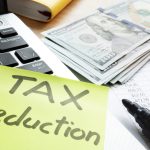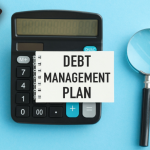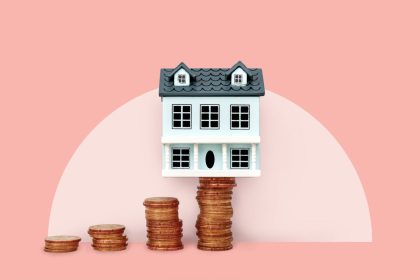Key takeaways
- A personal line of credit is a revolving account that works like a credit card.
- Personal lines of credit are unsecured with variable rates that are typically much lower than credit card interest rates.
- You can take out a line of credit for business purchases or for personal use.
If you’re trying to avoid the high rates that come with credit cards, but retain the flexibility of revolving credit, a personal line of credit is worth considering. A personal line of credit can help you cover unexpected expenses, fund major projects or fill temporary cash flow gaps.
However, unlike a credit card, the account’s funds can only be used and reused for a set time called a draw period. When it ends, you’re no longer allowed to make withdrawals and will need to reapply to keep the personal line of credit open.
What is a personal line of credit (PLOC)?
A personal line of credit, or PLOC, is an unsecured revolving account with a variable interest rate. The monthly payment is based on the amount you use, and you can use and reuse it as needed and pay back with interest, much like a credit card.
PLOCs generally have lower interest rates than credit cards, so they’re typically cheaper for big cash advances. They’re also a helpful tool for managing daily cash flow if you have irregular income from self-employment or a seasonal business. If you have ongoing expenses, like medical bills or wedding planning, a PLOC’s revolving nature can give you flexibility to spread the payments.
How does a personal line of credit work?
You’ll find a lot of similarities between credit cards and personal lines of credit. The line is approved based on a review of your credit score and income. Once you’re approved, you can tap the money on a mobile app or by withdrawing funds at a local branch.
The monthly payment and interest charges are only accrued on the amount you use. For example, if you get a $10,000 personal line of credit but only need to use $1,000, your payment is only based on the balance you carry.
One difference from credit cards is the draw period, which only gives you two to five years to keep borrowing and repaying up to the limit. At the end of that period, you’d have to re-apply or pay the balance in full.
1. Applying for a personal line of credit
While they’re less common than personal loans, some financial institutions, including banks and credit unions, offer PLOCs. You’ll need a good credit score and a solid credit history to qualify for a personal line of credit.
“You want to have the best credit you can have,” Dave Sullivan, credit expert with People Driven Credit Union, said. “If you have any revolving lines of credit, it’s best to pay those down as low as you can prior to applying, and make sure that info has been reported to the credit bureaus.”
Check with multiple lenders to see who will give you the best terms. You will want to consider interest rates, repayment terms and the length of the draw period.
The application process for a PLOC is much the same as applying for any loan, and it can often be completed online. Once you’ve decided on a lender and the credit limit you’re seeking, you’ll need to provide documentation to verify your identity and income.
You generally need good credit to qualify for a PLOC (say, 680-plus on the FICO scale) because this is unsecured credit. You’re not putting your home, car or any other collateral on the line.
— Ted Rossman, Bankrate senior industry analyst
2. Using your personal line of credit
Personal lines of credit give you access to credit as you need it. You may receive a credit card or be able to access funds by transferring them to your bank account online. Banks and credit unions may allow you to transfer funds from your line of credit directly into your checking or savings account. You can use as much or as little of the account’s maximum amount at once as you wish. Just make sure you keep track of when the draw period ends — you won’t be able to access funds once it expires.
3. Repaying your personal line of credit
Your payment will vary based on the amount of credit you’ve used. It’s important to pay attention to how the monthly payment changes each month to avoid accidently underpaying the amount due. You may not see charges or payments on the account depending on when you access the funds and when your payment is due.
The structure of repayment can vary by lender. Common structures include:
- Draw and repayment periods: This is the most common type of repayment used for a PLOC, as described above. Typically, monthly payments are required during the repayment period.
- Balloon payments: This type of repayment requires that the full balance is due at the end of the draw period.
- Demand line of credit: While not very common, some lenders may set up a PLOC as a demand line of credit. This means the lender has the right to ask for full repayment at any time.
If you plan to close your account out after the draw period ends, find out if there are any fees for doing so.
Repayment for personal lines of credit
Personal lines of credit are temporary. You’ll have a finite period during which you may withdraw funds, called a draw period. If you still have an unpaid balance when the draw period ends, you’ll enter the repayment period.
When setting up your personal line of credit, ensure you understand your lender’s repayment terms and make a plan that best suits your finances.
Personal lines of credit vs. alternatives
If you’re not sure that a PLOC is for you, you have several other options to choose from. Some are revolving, but will be secured by your home (like a home equity line of credit). Others are installment loans like personal and home equity loans, with a fixed payment for a set time period.
Personal lines of credit vs. personal loans
Personal loans and personal lines of credit are completely different. A personal loan is a type of installment loan. You receive all the funds at once and make payments on the full amount you borrow. It comes with a fixed rate, payment and is repaid typically over one to seven years. It’s a good option if you need all the money at once for debt consolidation, emergencies or even to buy an old car that auto lenders won’t finance.
A personal line of credit may give you a lower monthly payment if you don’t want or need to use all of the funds immediately. However, because the rate is variable, the payment is more unstable. Making the minimum payment due could keep you in debt longer than if you had a set payment with a personal loan.
Personal lines of credit vs. credit cards
The decision between a personal line of credit and a credit card comes down to rate, qualifying requirements and flexibility. There are credit cards for all types of credit types, whereas PLOCs are usually reserved for higher credit score borrowers. That typically means rates are higher on credit cards versus personal lines of credit.
You also won’t have a draw period with a credit card. The account will retain its revolving credit feature for as long as it’s open. However, that makes it easier to carry a balance longer than you would with a PLOC since you have a limited draw period.
Personal line of credit vs. home equity loans
A home equity loan is a fixed-rate installment loan with terms ranging between 15 and 30 years and rates that are typically much lower than PLOCs. Interest is tax-deductible if you use the funds for home improvement. However, because a home equity loan is secured by your home, you risk losing your home if you default.
Personal line of credit vs. home equity line of credit (HELOC)
HELOCs and personal lines of credit give you the same flexibility of using and repaying the balance as you wish. A HELOC also features a draw period, however, it’s often much longer, extending out to 10 years at many lenders.
It has the same tax benefits as a home equity loan if you use the funds to renovate your home. It also has the same risk of losing your home to foreclosure if you can’t repay it since it’s secured.
The best personal loans of 2025
If a personal loan is the right choice for your borrowing needs, consider Bankrate’s top picks for the best rates.
Learn more
Pros and cons of personal lines of credit
Pros
- Access to funds as needed
- Overdraft protection on some accounts
- Lower rates than credit cards
- Payment is only based on credit used
Cons
- Variable rates may lead to a higher payment
- Limited draw period compared to credit cards, which have no draw period
- Higher rates than HELOCs
- Typically need high credit scores to qualify
Bottom line
Like a credit card, a personal line of credit can be used on a revolving basis as needed. Borrowing money this way has many advantages, including providing quick access to cash and offering more competitive rates than credit cards.
But you’ll need a solid credit history to qualify and there’s a risk of overborrowing if you don’t have a history of using credit responsibly. Be sure to shop around and find the best interest rate and terms for your financial needs.
Frequently asked questions about personal lines of credit
Why we ask for feedback
Your feedback helps us improve our content and services. It takes less than a minute to
complete.
Your responses are anonymous and will only be used for improving our website.
Help us improve our content
Read the full article here
















